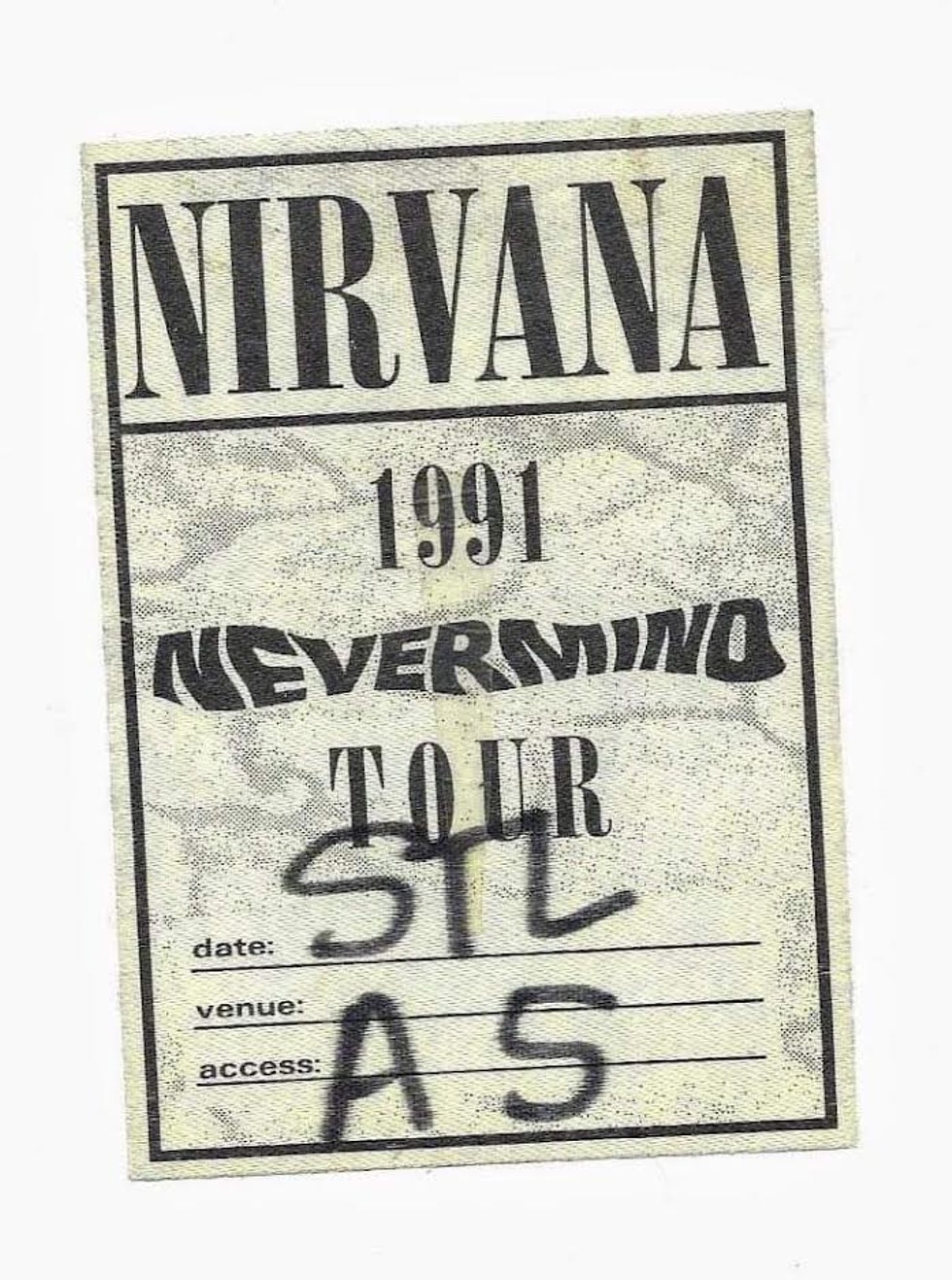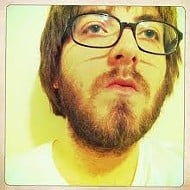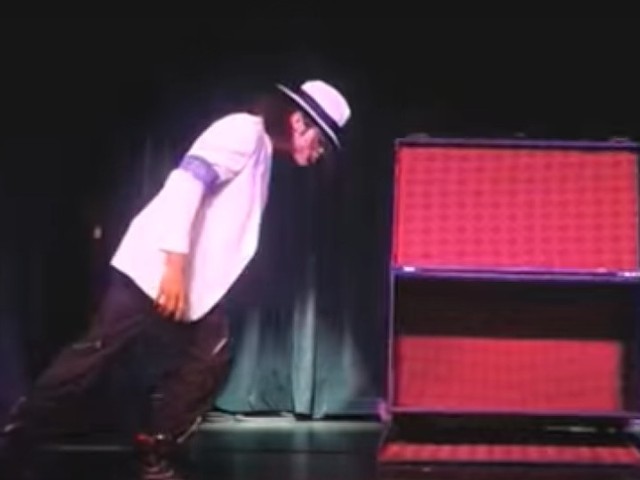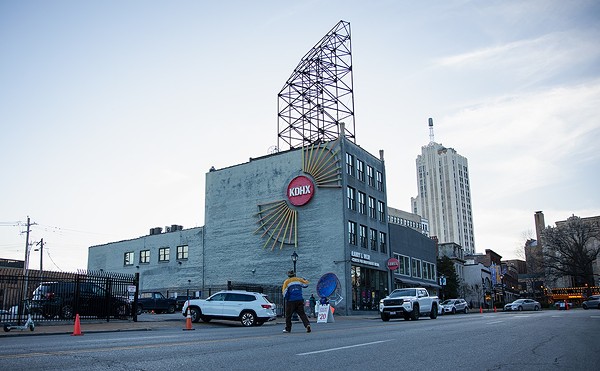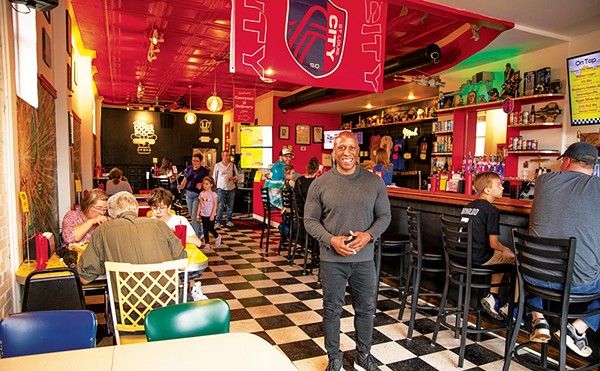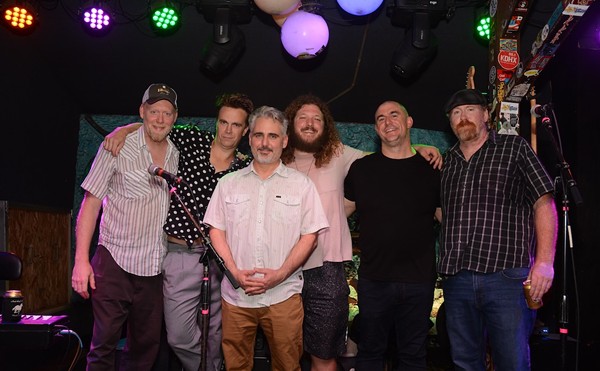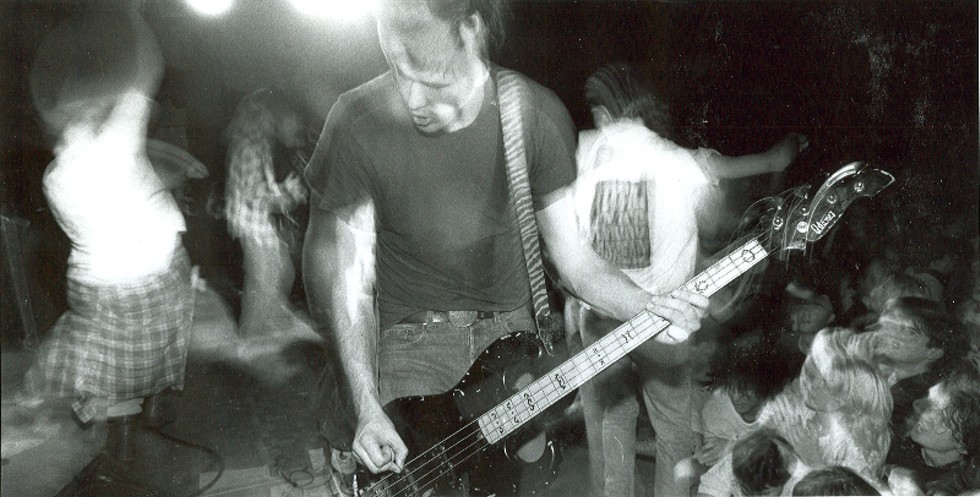
VIA SUB POP
This photo is not from the night in question — proper documentation of Nirvana's Mississippi Nights show has largely been lost over the years — but it's an apt visual from the same era.
Thirty years ago, on October 16, 1991, Nirvana played its first and only St. Louis gig at the beloved and now-bygone venue Mississippi Nights. It was a clear and cool autumn Wednesday when the trio of Kurt Cobain, Krist Novoselic and Dave Grohl pulled into the late, famous Landing night club. The band was in the middle of a massive metamorphosis from underground punkers to generation-defining, international superstars; its landmark album Nevermind had been released 22 days earlier on September 24, 1991, by major label DGC Records, and the accompanying music video for its first single, “Smells Like Teen Spirit,” had premiered as a “Buzz Bin” clip on MTV’s late night alternative video show 120 Minutes just seventeen days prior on September 29. The group’s unexpected ascension to a garish grunge commodity was as close to a viral sensation as anything got in the time before dial-up internet, largely due to “Teen Spirit” almost immediately leaving the “Buzz Bin” and landing in continuous rotation on MTV. In this short period, which was less than a month from the album’s release and the tour stop in St. Louis, the relatively small 1,000-capacity venue was completely oversold (tickets cost between $8 and $10 dollars!), and anticipation was at a fever pitch for Seattle’s greatest flannel-clad exports to play their debut gig in the river city.
What happened that night has gone down in St. Louis history as one of those legendary gigs, a show that now everyone claims to have attended but only a lucky few actually witnessed. From the start, the crowd erupted into a cacophony of blood, sweat and passion as slam-dancers and crowd-surfers ransacked the pit, stopping the gig more than five times before Cobain got frustrated or inspired (perhaps both) and invited the whole audience onto the stage mid-show.
Naturally, the crowd enthusiastically complied, with chaotic results. Gear was stolen. The fire marshal was called. Grohl booked it backstage and giddily watched as anarchy engulfed his fellow bandmates, who were pinned to the walls with their instruments, and a near-riot broke out.
School-yard legend among '90s stoners about the gig alleged that Cobain wanted to cause a stir that would rival Guns N’ Roses’ infamous “Riverport Riot.” A few months earlier, on July 2, 1991, Axl Rose had stormed off stage after attacking a fan who was taking pictures of the band and pouted, “Well, thanks to the lame-ass security, I’m going home!” An actual three-hour riot ensued, with dozens of injuries, as intoxicated fans angry about Rose’s early departure attempted to rip seats out of the then less-than-a-month-old amphitheater in Maryland Heights. Though the rivalry between Nirvana and Guns N’ Roses was very real in the early '90s and is used by many rock historians as a way of describing the cultural shift from the days of hair-metal dominance to the Nevermind era, this was likely not on the minds of the Nirvana crowd. Novoselic even allegedly pleaded that night with the audience, saying, “Don’t be like the GnR crowd, because shit attracts flies.” The fervor at Mississippi Nights was more spontaneous, with a crowd simply elated by a fleeting few hours of raucous rock & roll and the opportunity to see a band at the peak of its performance in a venue the size of which it would likely never play again.
The Riverfront Times spoke with some of the lucky few who were there that night in a series of one-on-one interviews to build an oral history of the chaotic show.
Pat Hagin, booking agent for Mississippi Nights, current owner of the Pageant and Delmar Hall: I booked the show. In those days, it was probably [booked] six weeks to eight weeks before the show. We booked [Nirvana] before we had any idea about the band.
Rob Wagoner, Ultraman and Bent, Euclid Records: When Bleach came out it wasn’t really my thing. I knew a lot of people who liked them a lot. Ultraman was in Munich playing on September 24 when Nevermind came out. We were in the club in the daytime and they were playing it. I remember thinking, “Wow, is this the same band?” And the kid from Scream was on drums.
Matt Harnish, Bunnygrunt, Matt Harnish’s Pink Guitar, Vintage Vinyl: I had heard “Smells Like Teen Spirit” on Tony & Cat’s radio show on KDHX, "The Groove Machine," on Saturday nights. That was the only song I had heard by [Nirvana].
Eric Eyster, Hell Night: I remember it was particularly exciting because they'd never played St. Louis before. Their buzz was strong though, because the show was sold out at Mississippi Nights. My friends and I had already heard most of Nevermind because of all the bootleg recordings of the demos that were floating around. Most of us already knew the songs, we just didn't know a lot of their correct titles.
Hagin: The guest list might have been huge because everyone was crawling out of the woodwork trying to go to that show. There could have been another hundred people in there just from various record stores, newspapers, fan-zines.
Roberta Patterson, former KCOU music director: In 1991, I was a music director at KCOU in Columbia, Missouri. The station was an early supporter of grunge and other alternative music, and we had played Bleach. When Nevermind came out, I remember writing the album review for the station. Since the station was so supportive, the DGC college radio rep hooked me up with tickets and my roommates and I were going to drive to STL for the show.
Thomas Crone, former Riverfront Times music writer: I was really, really lucky because I was covering music for the RFT, so my ticket was comped. I certainly would have paid for a ticket. I absolutely wanted to see them. I think a lot of people at the time felt like Urge Overkill was the better band. I never quite found my clique as a fan of Urge Overkill. For me it was 100 percent a Nirvana concert.
Harnish: Probably the reason I was at the show was because my roommate was a big Urge Overkill fan. I was in college. I was DJing at KSLU. Mississippi Nights was kind enough to give us free tickets to almost every show to give away, but we had essentially zero listenership. It was pretty much always the DJs that went to the shows.
Jim Utz, former Vintage Vinyl employee: The night before I went to Columbia, Missouri, to see the Meat Puppets and Urge Overkill play at the Blue Note. We’re hanging out after the show at the Blue Note, and Urge Overkill was just hanging out too. I was talking to them. I told them I was going to see them tomorrow night with Nirvana. They asked if there were cool places to shop [in St. Louis] for vintage clothes. I told them about Haberdashery and Hullabaloo. We exchanged numbers. I drove back to St. Louis and went to work the next day at Vintage Vinyl and they called me at work. They told me [Hullabaloo was] great. So they said, “Thanks, we’re going to leave tickets for you at the door.”
Patterson: Urge Overkill played a warm-up show at the Blue Note. We were big fans, and the band came by KCOU and did an interview before the show.
As it turns out, UO left the Blue Note without a guitar, a bunch of tools and a sweater. When they got to STL, they went by Vintage Vinyl. That is where Jim Utz had spoken to them, and they asked him if he knew anyone in Columbia that could get the things and bring them to the show. Jim knew I was driving in and put them in contact with me. I was able to pick up the things and deliver them to Mississippi Nights. I remember walking up with the guitar and the other things and there were loads of people all around the club. Since I already had tickets, UO gave me and my friends backstage all-access passes for our trouble.
Wagoner: During Urge Overkill you could freely walk around and not bump into anybody. I remember when Urge Overkill played, Grohl was standing on the first riser by himself and nobody was paying him any attention. We knew him from when he was in Scream, so we went up and talked to him for a while.
Utz: I get to the door that night, and Urge Overkill put my name on the guest list and gave me some backstage passes. When Urge Overkill finished their set, I went backstage. Between bands, I’m back there hanging out with Urge Overkill and they said “Hey, why don’t you watch with us from the side of the stage.” I’m like, “Cool!”
Crone: The lights guy invited me into the light booth, which was all the way at the back of the club and up a small flight of steps. I remember it was so crowded. He saw me and fished me out. I watched both bands from the sound booth, which gave me this outrageously cool ability to see as it all started to break down. From that vantage point it was quite a thing to see.
Eyster: By the time the lights went out for Nirvana, the place was ready. I was jam-packed in the very front, knowing full well I would soon be feeling crushed. Everyone was hypnotized by Nirvana's opening song, “Jesus Doesn’t Want Me for a Sunbeam.”
Crone: I think everyone in the room felt like they were there for something special. The room was really alive, in the sense of, like, electric. It seemed like there was a lot of chaos happening in front of the stage, spilling onto the stage.
Hagin: I went down that night and ended up sitting in the office talking to the owner. Urge Overkill plays. Set break. Then Nirvana goes onstage. I was still talking to the owner, but I was listening out of one ear to the show, and I could pick up [that] something wasn’t going right by what I could hear from the stage.
Eyster: It wasn’t until the opening riffs of the second song, ”Aneurysm,” when the place went batshit. It was one of those times where I was being lifted off my feet merely from the fact that I was crammed between hundreds of people pogo-ing at the same time.
Utz: The one thing I remember the most from the show was when they went into “Aneurysm.” It’s still goosebumps.
Hagin: Back in those days things were a little rougher around the edges.
Joe Poole, fan: The crowd, for Mississippi Nights’ standards, was a little bit rowdier than usual. I was up, rolling around in the crowd. I think it was probably a song off Bleach like “Floyd the Barber.” I flipped over onto the stage. My wife says that when I went to stand up, Kurt helped me up. I don’t completely remember. The next thing I know I got slammed in the back by security. I was pulled backwards past the drumset and thrown outside.
Tommy Wieprecht, former Mississippi Nights security and bartender: This kid gets on stage. He gets in the front of the stage a little bit off center. Kurt Cobain was the center guy. The kid’s on stage jumping around, dancing around on stage left. One of the other security guys, he goes out and grabs the guy by the arm and says “Let’s go.” He gets him in a bear hug and they start scuffling. Somehow they both fell face first on the floor. Kurt Cobain was watching it and all the sudden he stops and says, “What the hell are you doing? Let that kid go.” Kurt looks at the crowd and says, “Fuck security. Everyone on the stage now!”
Poole: Security just got steamrolled.
Wieprecht: We ain’t going to win this one. There were only six or seven of us [on Mississippi Nights security]. We went out the back door. We took our staff shirts off and turned them inside out. [We didn’t want our] staff shirt showing because these people were going fucking crazy. They were, like, possessed. All the sudden everyone was up on stage. We walked down the alley and went to 2nd Street and popped into another bar and got a beer really quick. By the time we got back the cops had got there. When we got back in Mississippi Nights there were probably 100 people on stage, just milling around.
Eyster: The security at Mississippi Nights started getting particularly hostile with the crowd and throwing kids out of the show. Kurt was displeased, and eventually as an act of defiance, he invited the crowd onto the stage. I didn’t go up, but I watched the chaos. The scariest part was watching the PA stacks almost topple over, but Krist Novoselic managed to talk everyone down and the show started again.
Crone: When the band invited the audience members up, it seemed like all the equipment was going to get wrecked or all the cords and cables were going to come undone. From a mechanical perspective it seemed like it was going to be over. It’s pretty wild that any part of that show took place after.
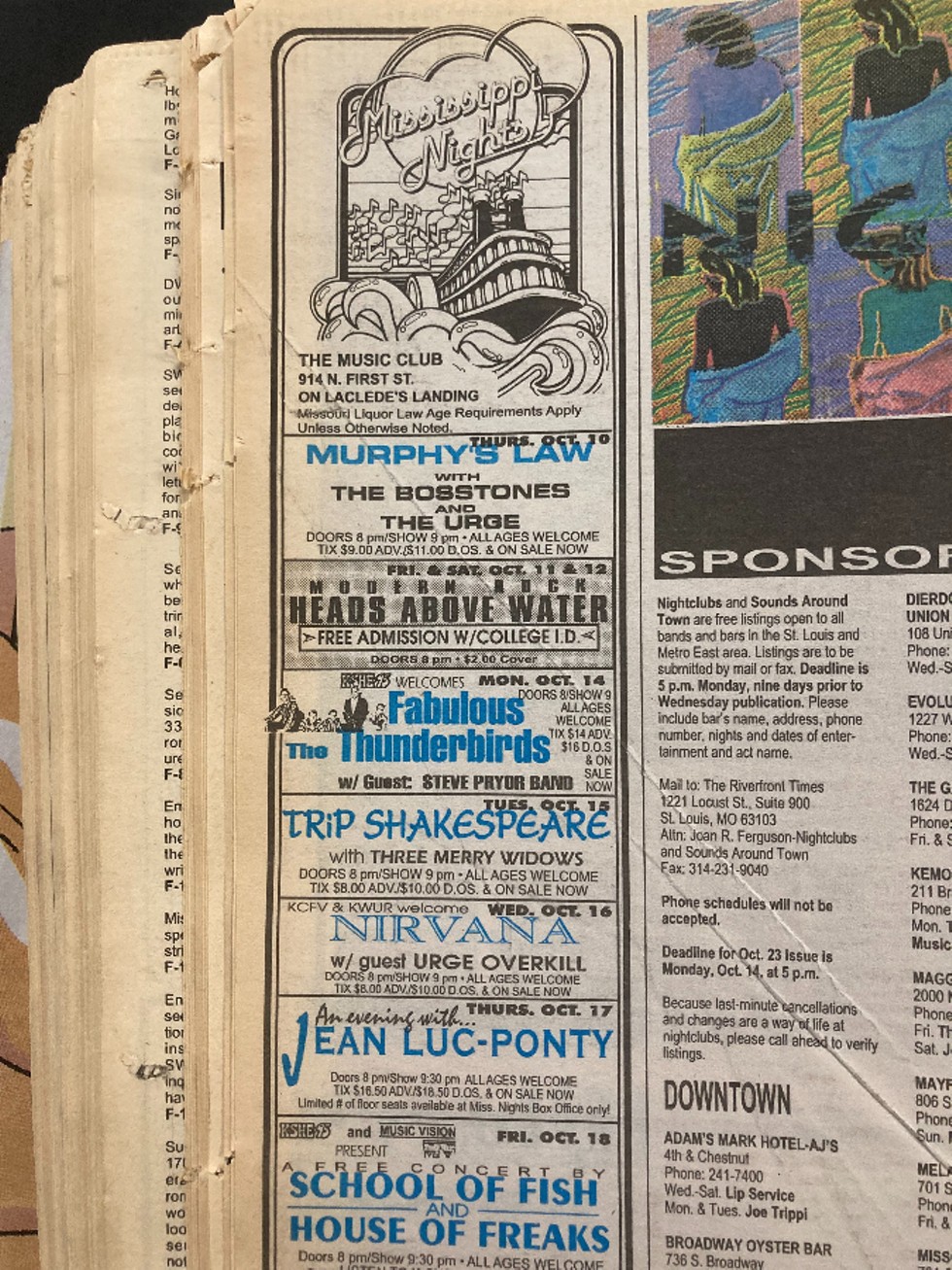
VIA RFT ARCHIVES
A Mississippi Nights advertisement in the pages of the RFT the week before the show.
At a Foo Fighters concert at the Scottrade Center in St. Louis on July 20, 2008, Grohl reminisced about his former band’s Mississippi Nights experience as pre-song banter before the twee jangle with the memorable Mentos-inspired video, “Big Me.”
Grohl: I’ll tell you a Mississippi Nights story. A long, long time ago. In a galaxy far, far away. I was in a band way back in 1991. And we had just made this fucking record that we didn’t think was a big deal, but evidently a lot of people from here did because too many people showed up to the Mississippi Nights show. So we fucking roll into town and we were on tour with a band called Urge Overkill. Actually, the night before, we had played a show and my drum set was all fucked up the whole tour, because the guy that played fucking lead guitar and sang in that band used to chop at it every night with his guitar. Right. So there were holes in my drum kit.
So we thought, the night before we played here, at the end of the show let’s fucking destroy the drum set. Like really destroy it, so I got to get a new one. So we did. After the last song, we said, ‘Hey y’all, you can leave if you want, but we’re going to just bust the drum set up.’ So we did, and the next day was a Sunday. All the drum shops were closed, so I was fucked. Shit out of luck. So I had to borrow the drum set of the opening band, who were called Urge Overkill. So we come to Mississippi Nights, Urge Overkill plays and it’s great. We come along and I’m borrowing their drum set. We play a couple songs and the security guys were being kinda rough with the kids. So, the singer guy says, ‘Hey motherfuckers, if you don’t cool it we're going to fucking stop playing.’ We play a couple more songs, and they don’t stop. We stopped one more time and say, “Hey, if you motherfuckers don’t cool it we’re going to stop playing.” We played a couple more songs and they were still rough. We stopped and said “OK, you know what? Everyone on stage!” And the whole fucking club got on stage at Mississippi Nights! It was this radical, fucking kick-ass riot that was happening.
So I fucking split. I went backstage. I don’t want to get my ass kicked by someone I don’t know. I get back to the Urge Overkill dressing room, and I’m like, "Dudes, you got to get out there! There’s a fucking riot going on." And Blackie [Johnny "Blackie Onassis" Rowan, drummer of Urge Overkill] says, “What about my fucking drum set, motherfucker?” Oh, shit. So I spend the next fifteen minutes gathering up his drum set from all the assholes that were looting the gig. Then we put that shit back together, and we finished playing the gig. Of that tour, that was one of the most memorable nights of my fucking life. It’s good to know you can go anywhere and still find a little bit of fucking kick-ass, freaky drunk-ass rock & roll wherever you go.
In an excerpt from the book In Their Own Words — Kurt Cobain & Courtney Love, Urge Overkill’s drummer Blackie Onassis confirms the experience.
Onassis: We were doing a show at the Mississippi Nights club in St. Louis on the Nevermind tour, and the whole day there had been this running joke in the Nirvana camp about how Guns N’ Roses had just had that big riot there. Kurt mentioned that he’d like to start a riot, too, but I don’t think anyone took him seriously.
Nirvana needed to use our gear that night because the previous evening they had just trashed everything. It was only twenty minutes into their set and Dave runs in and says that Kurt just invited the entire club onstage because there was so many kids stage-diving. We realized our gear was up there, so we all went running on stage to save our equipment. We found Krist and Kurt sitting on the edge of the stage, totally bewildered, with 500 kids swarming all around them. The whole place was going crazy, the owners were calling the cops. The police showed up and Krist gave this long speech [about] how everybody needed to get along, and he talked everybody back into their seats and the cops agreed not to arrest anybody. Nirvana started playing again and they kept the club open late so they could finish their set. Even the cops stayed and watched the show. What started out as total mayhem ended in peaceful resolution. That’s how badly people wanted to hear Nirvana.
Wieprecht: Only a few bands can possess a crowd like that. The crowd were like zombies. That was probably the most impactful show I ever worked.
Eyster: I remember the vibe wasn’t quite the same after that. The tightly packed crowd down front had dispersed some and the energy level had dropped significantly.
Crone: The fact that the GnR situation had already happened too probably permeated that whole room. I think everyone was kind of expecting some sort of chaotic thing to continue. I could very easily imagine some scenario in which the show stops, things become really violent and things spill out into the street. That it didn’t is a nice sidebar. It ended with music as opposed to what happened at the GnR show.
Wagoner: There was no riot. It was chaotic, but it didn’t seem dangerous.
Harnish: They came back and said they worked it out with the bouncers, and they were going to finish up their set. Krist Novoselic sang the intro to “Get Together” [by The Youngbloods], which I didn’t even know at the time [that] he does that on the album. I just thought “Oh, cool. He was just inspired by, like, alright, we’re all together now.” I thought he was totally just winging that one. I had no idea it was on the album.
Fritz Noble, Strangulated Beatoffs, White Suburban Youth: The bass player or the drummer had a couple of my band’s records [Strangulated Beatoffs]. Kurt was a big fan of Drunks with Guns, too. They were big fans of the Drunks and the Beatoffs. They had our record “Shake Your Dick” and they loved that song. I was backstage scarfing their beers. We went back to their hotel with them. It was a nice hotel downtown across from the Arch. They weren’t like Mötley Crüe or Guns N’ Roses. I was like, “Let’s party with these guys. Where’s the groupies? Where’s the cocaine?” They just wanted to go to bed. I guess they were the birth of the antithesis of the overblown rock star.
Utz: These were anti-rock stars, so no one was thinking they were going to become rock stars.
The cultural impact of Nevermind may be hard for Gen Z to fully conceptualize. Thirty years later, Generation X alternative rock is viewed on a macro level as really nothing more than plain old classic rock now (or “Classic Alternative,” if that’s a thing?). In St. Louis, it is not far-fetched to hear “In Bloom” sandwiched between “Wang Dang Sweet Poontang” by Ted Nugent and a Guns N’ Roses track on classic rock station KSHE 95. It’s a confusing paradox for the “Alternative Nation” icons to be anointed in the “Real Rock” pantheon. As the remaining band members prepare a massive 30th anniversary reissue of Nevermind, the group is simultaneously being sued by Spencer Elden, the then-baby on the album cover, who’s accusing the band of sexual exploitation despite partaking in the recreation of the cover multiple times during early commemorative anniversaries and having “Nevermind” tattooed across his chest. Dubious lawsuits aside, the album’s zeitgeist-level influence (cover art included) is certainly worthy of a modern reexamination.
Locally, the success of “Teen Spirit” certainly influenced the formation of “Everything Alternative” terrestrial radio station 105.7 the Point in ’93, giving a platform for local alternative legends like the Urge and Fragile Porcelain Mice. The Urge’s Steve Ewing even pays tribute to Nirvana’s legacy with a smiley face logo t-shirt that quips “Smells Like Grilled Onions” for his popular restaurant Steve’s Hot Dogs. Smaller local bands like Sullen were clearly following in the footsteps of Nirvana and Sonic Youth at the turn of the century, and more recently, anarchist punks Little Big Bangs are directly inspired by their lineage.
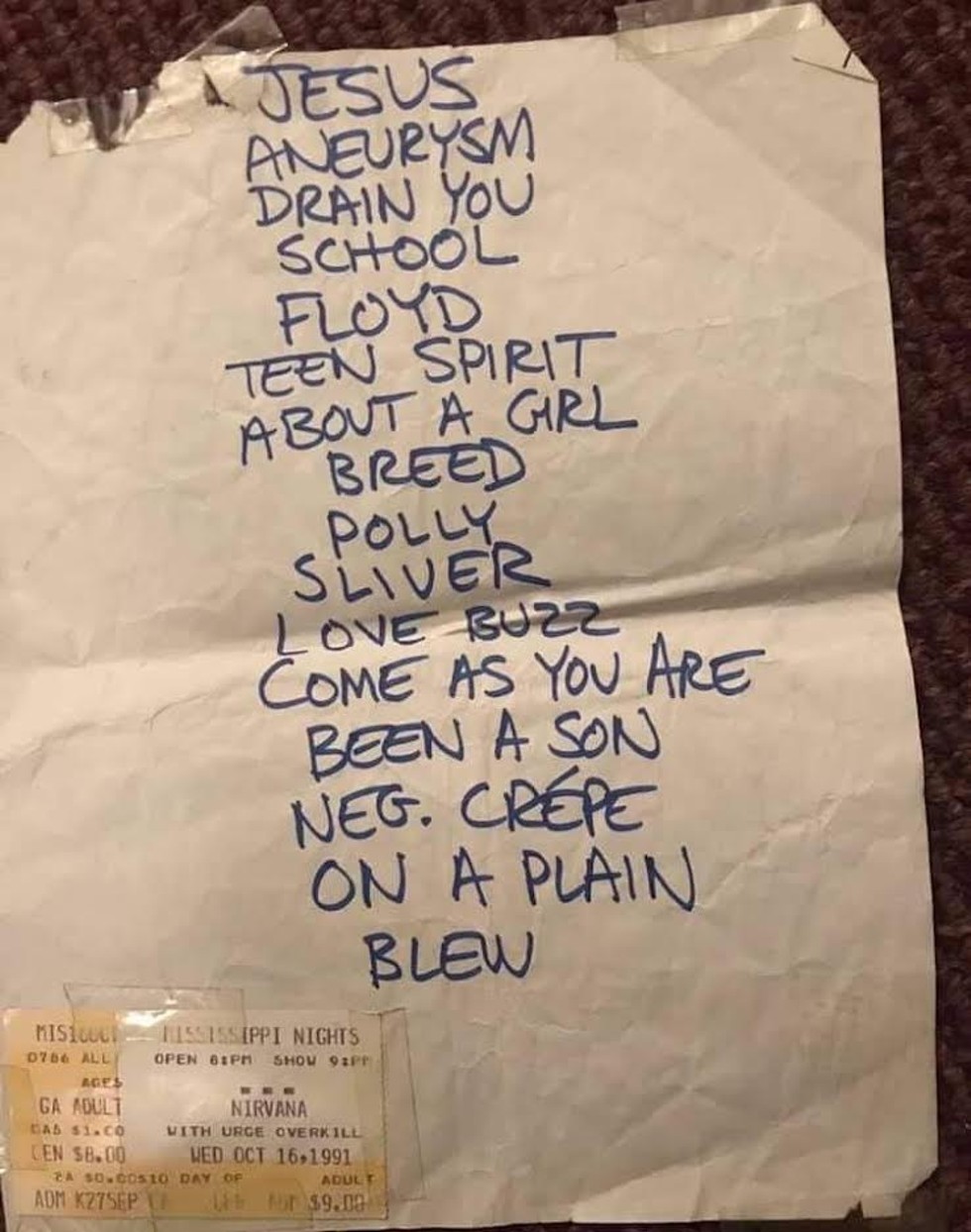
VIA ERIC EYSTER
A handwritten setlist from the show. According to lore, this list may be incomplete, and the band may have also played "Lithium" and "Territorial Pissings."
Utz: The thing I loved the most about [Nirvana] is they had their moment but they championed all their friends. Wearing Daniel Johnston t-shirts. Taking the Boredoms out on tour. Taking the Raincoats out. Taking an ABBA tribute band. Wearing a Flipper shirt. They always helped champion the people they loved. They never forgot where they came from and always tried to bring everyone with them on the wild ride they never anticipated being on.
Patterson: Nirvana had a profound effect on mainstream culture by shattering the archetypes associated. But the mainstream was already changing because of the impact of Lollapalooza, college radio, 120 Minutes and even hip-hop. It felt like Generation X had a seat at the table and we were going to make a positive impact because we were changing the culture. The door was finally open and the freaks and weirdos were walking through. Compared to what the metal and pop scenes were pushing, the alternative crowd was more accepting and respected other people whether they were women, LGBT, people of color. There was definitely a social movement within this community to try to make positive changes regarding human rights, the environment, reproductive rights, non-violence.
Perhaps the most lasting legacy, though, was Cobain’s advocacy of female-led groups including the Slits, the Raincoats, the Breeders, L7, Bikini Kill and countless others. At the height of his fame, Cobain promoted bands led by women as superior to his own. A decade prior, hair metal groups were singing songs like “Girls, Girls, Girls” and “Cherry Pie,” and now the most prominent rockstar on the planet was actively discussing feminism. This was quite a different approach. Of course, Cobain was married to the queen of punk rock, Courtney Love, who went on to find her own massive success in ‘94 with her band Hole’s album Live Through This. It’s fitting that when Nirvana was inducted into the Rock & Roll Hall of Fame that the group’s performance was led by some of the most prominent female figures in rock over the last five decades, including Joan Jett, Kim Gordon of Sonic Youth, Annie Clark of St. Vincent and Lorde.
Conflicted by success and an audience that grew outside of college rock intellectualism, Cobain wrote in the liner notes of the EP Incesticide: “If any of you in any way hate homosexuals, people of a different color, or women, please do this one favor for us — leave us the fuck alone! Don't come to our shows and don't buy our records.” This was an ethos not common for major label rock stars before and sometimes even after the Nevermind era.
The recent 2021 HBO documentary Woodstock 99: Peace Love, and Rage posits that the progressive influence of alternative groups like Nirvana and REM in the early part of the decade was definitively ended by the aggro-rage that resulted in riots, looting, fires and multiple sexual assaults at the festival at the tail end of the decade. Metaphorically, Limp Bizkit frontman Fred Durst’s tattoo of Kurt Cobain is the equivalent of reading the graphic novel Watchmen just for the costumed superheroes that kick ass, but completely missing all the grander context of the story. More still, Durst’s red baseball caps and “my way or the highway” ethos predated MAGA by a few decades, and it’s easy to imagine that some of the people that attended Woodstock ’99 were almost certainly at the January 6 capitol riots looking for something to break. It’s unfortunate to say that Nirvana’s sound certainly inspired the empty post-grunge sounds of sadgasm groups like Puddle of Mudd, but the band’s larger cultural influences is closer to the beach-themed skate punk of Wavves, or the garage soul-baring of the late Jay Reatard. More recently, Kid Cudi and Post Malone have even paid tribute to the grunge trio. Of course, Grohl carries the torch as well with Foo Fighters, and if that band’s center-left anthem “Times Like These” can somehow influence Joe Manchin to end the filibuster, more power to him.
Wagoner: What Nevermind did…. Ultraman’s final show was two months after the Nirvana show. We had never played to more than four or five hundred people and we sold it out as a headliner at Mississippi Nights. That whole era from ’91 to ’96, a lot of people were going to see bands that they wouldn’t have gone to see before. Local bands could play for a thousand people, or the Urge could sell out a couple of nights in a row. Before that, they were just local bands. It was good for a while.
Hagin: Immediately, [Nirvana] were too big [to be playing Mississippi Nights] by the time they played. They were just honoring their contract.
Wagoner: In another couple weeks [after the Mississippi Nights show] they could have played to five thousand people or ten thousand people, but at this point they were not the biggest band in the world. They didn’t have the pressure yet of when they were rich and famous. They were still hungry, and they were still happy. I think that would have been about the best time to see them.
One of the great rock & roll sins St. Louis has committed was tearing down Mississippi Nights in 2007. For rock fans, this was as grave a disappointment as tearing down the old Busch Stadium, the only place the Beatles ever played in St. Louis, to replace it with our current Busch Stadium and Ballpark Village. Now, the only venue Nirvana ever performed at in St. Louis has been demolished to become a parking lot for the Lumière Place Casino and Hotel. The Landing’s youth culture cred hasn’t been the same since. Fittingly, Mississippi Night’s bar and exterior sign’s inclusion in the St. Louis Sound exhibit at the Missouri History Museum highlights the important role it played in St. Louis’ live music scene.
It’s remarkable, too, that the Mississippi Nights gig was just one of many legendary shows on the Nevermind tour. Three nights later in Dallas, Texas, Cobain famously was punched in the face by a security guard while crowd surfing during “Love Buzz.” The moment was captured in the VHS Nevermind-era document Live! Tonight! Sold Out! By Halloween, the band returned to Seattle for a legendary hometown show documented in Live at the Paramount. Then, by ’92, Nirvana played arguably its most iconic electric gig at the Reading Festival to a crowd of fifty thousand, cementing the group as the biggest band of its day. Unfortunately, there is very little documentation about the Mississippi Nights gig. Even a definitive set list is hard to confirm, so this legendary gig exists only in the memory of the lucky thousand that were able to attend.
But for those lucky thousand people who actually made it to the show that night, to paraphrase “Lithium,” they found their friends, or god — or, at least, Nirvana.
[Editor's note: An early version of this story misspelled Tommy Wieprecht's last name. We regret the error.]


